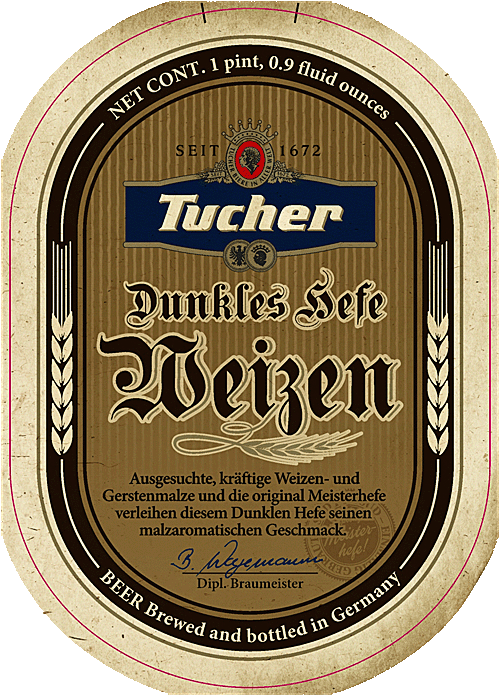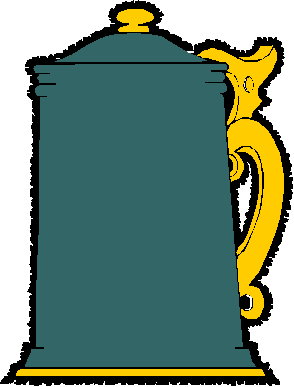

Tucher Dunkles Hefe Weizen




Review Date 6/29/2007 Last Updated 1/7/2018 By John Staradumsky
If anybody knows about beer, it’s the Germans. Sure, other countries have beer culture, Belgium, England, and the Czech Republic coming most immediately to mind. But my opinion is that the Germans are most serious about beer. Hey, they passed a law to protect consumers from bad beer almost five hundred years ago, after all.
Rich bocks and doppelbocks, hoppy pilsners, soft malty helles , sweet nutty
dunkles; these are just some of the many beery treats to be found in
Germany. But if you head down to the southern Land of Bavaria, you’ll
find a very special brew that is especially enjoyable in the hot summer
weather: Hefeweizen, or wheat beer with yeast.
The Bavarians, who originated the Reinheitsgebot (beer purity law),
insisted that all Germany make it law before they would agree to enter the
newly-united German nation in 1871. In their own way, they were then as
shrewd as old Otto von Bismarck himself, the German “Iron Chancellor” who
brought about Germany’s victory over France in the Franco-Prussian War and
united the various German states.
The Reinheitsgebot says that you can only use barley malt in your beer, but
an exception was made for one other grain: wheat. Wheat is the heart and
soul of weizen beer, and gives it it’s tart, refreshing character.
Weizen is generally cloudy in color, almost yellow-whitish and often smacks
of banana and clove. A darker variety called dunkelweizen adds a
touch of dark malt, perhaps Munich or Vienna, for a deeper color and a bit
more flavor.
Nuremberg’s Tucher brewery has always been one of my favorite German
brewers. Here in the good old US of A, you’ll see most of their beers in
half liter single bottle for about $2. They’re a great deal for that price,
and you can buy several varieties of wheat beer as well as their excellent
Bajuvator Doppelbock
this way.
I pour my Tucher Dunkles Hefe Weizen into an authentic swirled glass
Tucher weizen beer glass. The liquid is a dark chocolaty brown color with a
huge, towering rocky head forming atop the liquid. I get to pour about a
third of the bottle before the foam reaches the top of the half liter glass.
After letting it subside a little and taking a quick sip, I can pour another
third, then I swirl the yeast in with the last third of the bottle and
decant it as well.
A quick whiff treats the nostrils to slightly nutty, tart and inviting
aromas. Then a sip reveals a very tart and refreshing body with lots of
crackery wheat, a hint of smoke, light clove, soft nutty notes, and a touch
of chocolate. The finish is balanced with wheat tartness though you won’t
find much in the way of hops there.
I’m partial to German beers, and I do so love a delicious hefeweizen in the
summertime. And while a pale hefeweizen is perhaps the most refreshing, a
good old dunkles, with its delicious dark malty flavors, can be just as
refreshing and even more delicious. Tucher’s version is surely one of the
better examples, and a real treat for just a measly two bucks.
Update 1/7/2018: It's been a while since I've updated this page, a little over ten years to be exact. Still, Tucher Dunkles Hefe Weizen has hardly changed, and with a brewery that has been in the business since 1672, that's hardly surprising. It's still wonderfully soft dark nutty, crackery, and hinting at smoke. It's pricier at $3.99 a half liter bottle, but hey, that's a bargain for craft beer these days.
Glad I tried it?
T
Would I rebuy it??
*Pricing data accurate at time of review or latest update. For reference only, based on actual price paid by reviewer.
(B)=Bottled, Canned
(D)=Draft